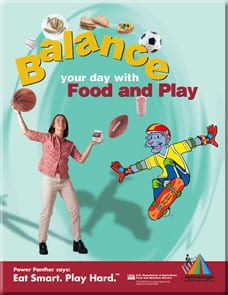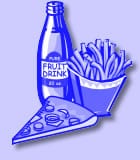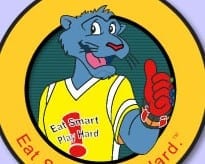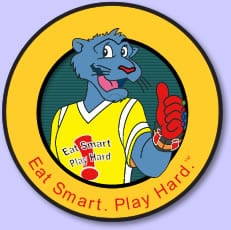There is a public health crisis facing the United States and many countries around the world. Unlike so many public health crises resulting in disease, it can’t be cured by an inoculation. The
20% of our children are considered obese. That’s 30% or more overweight. Our children are growing up in a fast food and processed food culture driven by speed, cost, and convenience.
The good news is that many people are concerned for our children and are researching ways to halt these trends and turn things around.
Speed – Cost – Convenience
So you may ask yourself, “Where are we now? What is the situation we are living in?” We are living in a culture and time where our decisions about what to eat are decided upon three factors. Speed, cost, and convenience. How fast can our meals be fixed? Are we getting the most for our money? How convenient is this meal? Do I shop for the ingredients or can I drive through somewhere? Is the drive thru close to where I am now?
I think most people are aware of the fact that we eat more fast food than we did as a country even a decade ago. We all have busy and fast paced lives. With the cost of living, most families have two parents who have to work; which means less time for actual meal preparation. We are also aware that fast food is processed food, and not healthy for our bodies.
Portion Distortion
Not only are we choosing unhealthy foods to eat but we are also choosing to eat too much of it. What we call portion distortion. Fast food companies and restaurants advertise getting more for your money. Who doesn’t want more for less? This is the snowball that started leading to the portion distortion in our society.
We no longer recognize what proper portion sizes are. A serving size of soda in 1956 was 8 oz, now its 20 oz. – over 3 times the size. A good example of this is a McDonald’s meal. What used to be a serving
It’s not only fast food. It’s bagels, donuts, muffins, chips. You name the type of food and most likely you’re eating too much of it. The most disturbing fact we’ve learned is that it starts young- the typical American baby is overfed by 250 calories per day.
It’s not only the extra calories that are bothersome but the fact that your children will grow up with this distorted view of “normal”!
Not only is there portion distortion but another kind of distortion, body size! One doctor reports that he worked in a clinic where parents were bringing their children in worrying that they were too small, when in fact they were at the normal height and weight, but smaller than their friends and other family members, who were, of course, overweight or obese.
The danger in eating processed foods, too much food and having a distorted view of “normal” is not just being overweight or lacking in self-confidence, it can lead to preventable life threatening illnesses such as heart disease, diabetes, and shortened life expectancy.
Another troublesome finding in regards to childhood obesity is that the current twenty-somethings represent the first generation in history that is not expected to outlive their parents!
San Diego County Office of Education
Instructional Television Presentation
Shaping Up: It’s Elementary
Solutions for Childhood Obesity.
PEP Grant Components.
SPARK and Peaceful Playgrounds.
View this 330-minute program…
School Obesity Prevention Programs
Now we know where we are as a nation and culture, so how can we reverse the effects? The good news is childhood obesity has captured the attention of legislators, educators, policy makers and the general public who are aware of the problem and joining forces to stop this epidemic.
Public health officials emphasize that schools are ideal places for programs to target childhood obesity. Children from the ages of 5-18 spend most of their time at school. They average about 2 meals per day at school.
There is a recent study showing that educating children in school on nutrition & removing vending machines does make a difference! So schools appear to be the most promising setting to begin to battle the epidemic.
The above mentioned study led by Gary Foster, director of the Center for Obesity Research and Education at Temple University, found that the rates of new obesity cases in the intervention schools leveled off while the control schools saw a steady increase in new obesity cases, although the rates of children that were already obese did not drop. So in this case, an ounce of prevention is worth more than a pound of cure… literally!
An additional school intervention showing promising results in children eating more healthy food was presented in our “Recess Before Lunch” article.
Childhood Obesity – Eat Smart and Play Hard
So if you are working at a school you might be asking yourself, “Since research is indicating that I can make a difference in preventing childhood obesity. What can I do?”
Research is showing you can do a couple of things. 1. An immediate first step is cut vending machines or replacing junk food in vending machines with healthy snacks. 2. Teach portion sizes and teach the difference between treats and snacks. The USDA materials entitled Eat Smart Play Hard are an excellent free resource.
In one survey it was identified that of the drinks available in vending machines:
- 70% are sugary drinks such as soda, juice drinks with less than 50% juice, iced tea and sports drinks
- Of the sodas, 14% are diet
- Water accounts for 12%
- Milk for 5% (mostly high-fat whole milk or 2%)
Instead: Replace all the soda with 100% fruit juice, water and low fat milk.
Of the snack foods sold:
- 42% are candy
- 25%, chips
- 13%, cookies, snack cakes and pastries
Instead: Cap snacks at 7 grams of total fat and 2 grams of saturated fat and eliminate candy.
Some suggested snack options are low-fat chips and pretzels, crackers or Chex Mix, granola and cereal bars, low-fat cookies and baked goods, nuts and trail mix; fruits and vegetables.
The studies are showing that these actions were successful in reducing the number of new cases of obesity by half.
An important topic of discussion with kids should be creating the distinction between a treat and a snack. Most kids think of chips, candy, cookies, ice cream as a snack… but they are very clearly treats. They have high amounts of sugar, fat or calories and very little nutrients! A snack is to be eaten every day; a treat is to be eaten occasionally.
| Treats Eaten Occasionally High in Sugar, Fat, Calories IE: cookies, chips, candy |
Snacks Eaten Every Day High in Nutrients IE: nuts, celery, yogurt |
The last suggestion is to teach portion sizes. There are a variety of resources out there that give you portion sizes. One simple method is to buy smaller plates. Our average salad plate used to be a dinner plate. So the items you serve food in can be a good portion control method. The other factor would be measuring out the snacks which will teach the child to eyeball correct portion sizes.
The USDA provides free resources to schools on these topics. One of the best I’ve found is the Play Hard Eat Smart materials which target healthy eating and physical activity.
For additional resources on prevention of childhood obesity at schools visit Eat Smart Play Hard, a program from the USDA Food and Nutrition Service.
Related Information on Childhood Obesity and Nutrition.
10 Tips for Healthy School Lunches
For a deeper dive into resources for Recess, Nutrition and Physical Education visit our Member’s Library. It’s FREE.



